By Philip Joe Cauchi
Situation analysed taken from the La Liga match Real Valladolid v. F.C. Barcelona which was played on the 25th of August 2018.
When we talk about the rear block we are not only referring to the back line, but the back line and the midfield sectors functioning as a unit. Still the back line plays a major role in keeping the stability and balance of the team. All members of this sector should adapt the correct distance between them, keep compact and reduce the space for the opposition’s forwards to receive the ball and be dangerous.
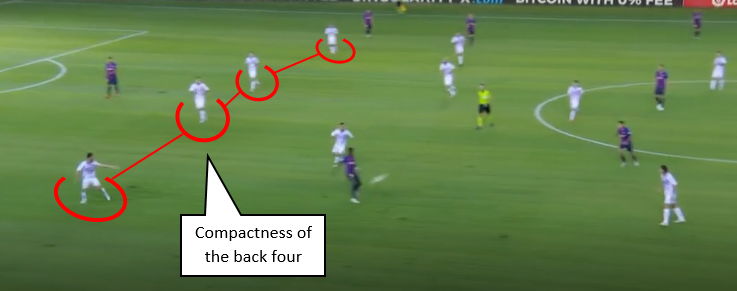
The midfielders retain their discipline and compactness to prevent through passes. They work together to protect the back line, to avoid excessive pressure on them while aiming to win possession of the ball and launch a counter-attack.
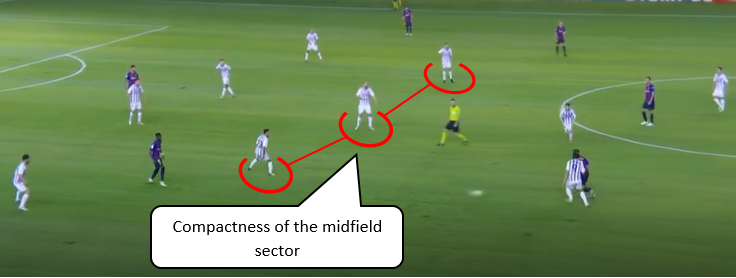
The midfielders are also responsible to track the oppositions’ insertions into attack from deep positions. This prevents that our defenders become outnumbered centrally in crucial zones and especially in front of our goal. Furthermore, we block the ball from getting to the feet of a dangerous opponent, such as in the below diagram where we have a Valladolid player tracking Messi’s run into the penalty area.
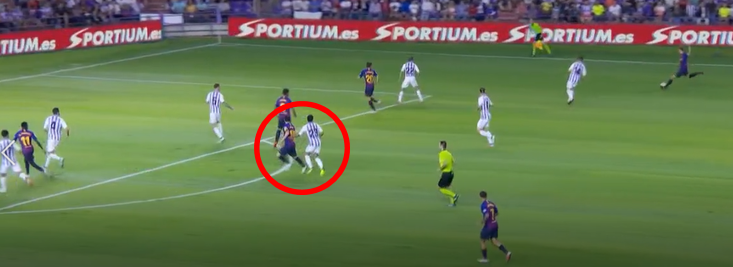
Normally the opponents will look to exploit the spaces between the lines. The closest midfielder should take a peek behind his shoulder so to assess where the opponent inside his zone is, therefore blocking the passing lane and be able to track his movements.
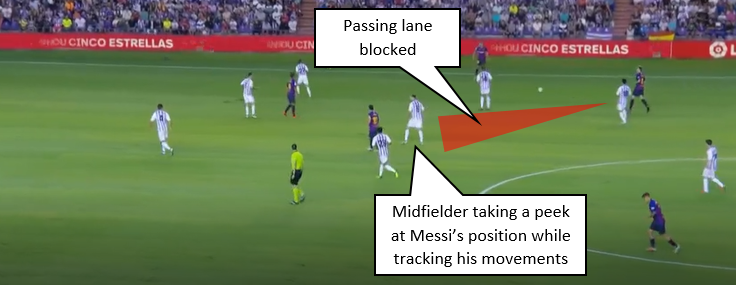
The midfield sector of three remain compact and slide as a unit to create numerical overloads when the ball is on the flank and also to prevent the opponents from playing deep. This requires that the members of this sector work close and in rhythmic with each other. Furthermore, the outside forwards must apply pressure on the ball-carrier to reduce his playing vision and options thus enabling us to perform a pressing action.
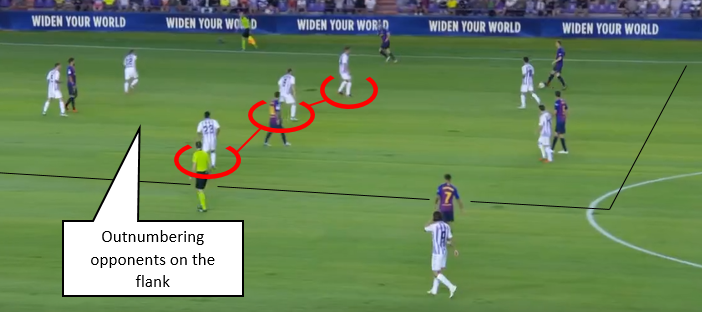
A High level of communication between players in the same sector and between sectors is imperative. Without proper communication and collaboration, denying opponents the ability to penetrate will not be achieved.
Exercise 1: 5v6 – Preventing depth.
Aim: Develop compactness of the central block to prevent through passes.
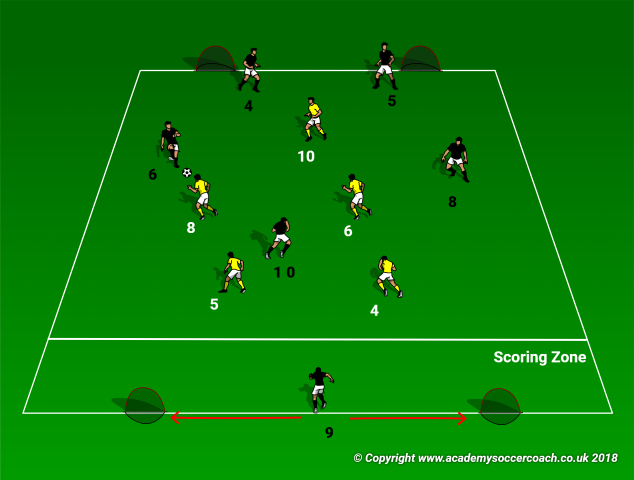
Description: The five defenders (yellows) work together to prevent the attackers from playing the ball deep with the aim of scoring in the two mini goals from inside the scoring zone. Inside the scoring zone a target player (9) is positioned and the attacking team (blacks) may either combine with him or attack the mini goals directly in order to score. Only two attackers, the number 9 included, and a defender may be inside the scoring zone at the moment of attacking/scoring. Upon winning possession, the defenders counter on the opposite two mini goals.
Progression:
Remove the scoring zone and play a game of 5v6 on two mini goals.
Key Performance Indicators:
Vertical and horizontal distances between the players of the defending team.
Block forward passing lanes.
Timing to apply pressure on the ball – covered balls, bad first touch, and opponents with no space to play.
Retain defensive discipline.
Exercise 2: GK-4-3 v 2-3-3 with overlapping full backs.
Aim: Develop communication between the back four and midfield to deny opponents depth.
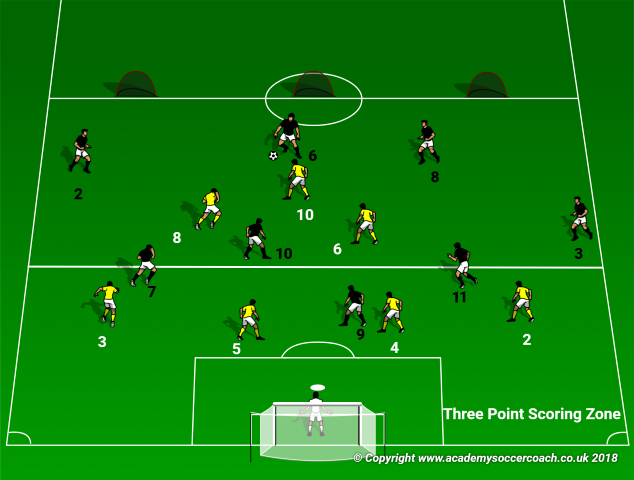
Description: Attacking team (blacks) plays in a 2-3-3 formation and aims to score as normal in the regular goal. However, if they score from inside the “three points scoring zone” a goal is worth three. This forces the defenders (yellows) to collaborate with each other to deny denying the opponents from gaining depth and create scoring chances. On recovering the ball, the defenders aim to score in any of the three mini goals, positioned on the centre line. Normal soccer rules apply. To overload the defenders, every time the ball goes out of play, the game is restarted by the attackers.
Progression:
Restart the game from different angles and with a recovering number 10. This forces the 6 and 8 to keep at a close proximity with the defensive sector and play for time until 10 tracks back and assumes his defensive position.
Key Performance Indicators:
Vertical and horizontal distances between the defence and midfield sectors.
Midfielders’ positions to block forward passing lanes.
Compact central block.
Create overloads around the ball.
Prevent a possible switch in play. If this happens, the team should shift as a unit.
Philip Joe Cauchi works as performance coach in Malta. He holds a UEFA A and a UEFA A Youth Elite coaching licences as well as a B.ed (Hons) in Education with Physical Education and is also a qualified football conditioning coach.


